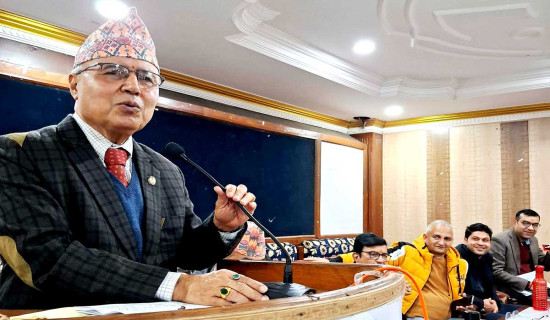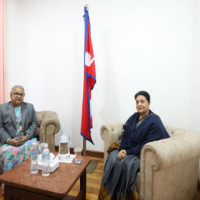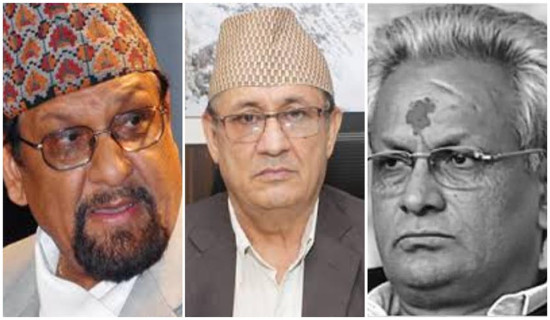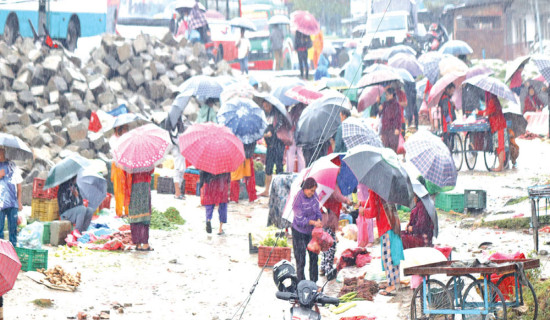- Sunday, 7 December 2025
Glow lights business dims down this Tihar
Kathmandu, Oct. 29: People are now preparing to celebrate Tihar, also known as the festival of flowers and lights.
Clay palas, electric lights and flowers are special attractions of Tihar. Nepalis use electric lights the most during Tihar. During Tihar, twinkling lights are used to decorate houses and shops.
As the Tihar festival approaches, people across the country are busy transforming their homes into dazzling displays of festive feeling.
From bright twinkling lights to elaborate decorations, the spirit of the season is illuminating streets and homes alike.
But the traders said that there was no enthusiasm in the market for the sale of flickering lights until Monday even though Tihar has already amid us.
According to the Federation of Electrical Entrepreneurs of Nepal (FEEN), the sale of flickering lights has decreased this year compared to the previous years.
“Tihar is one of the major festivals and season for the sale of lights, especially blinking lights. Traders expected its business to go up during the Tihar. But, the sale has been declining for the past few years instead of growing making the businessmen disappointed,” said Komal Pokhrel, 2nd vice president of FEEN.
According to him, the demand for twinkling lights has decreased by 25-30 per cent this year than in the last year.
The statistics of the Department of Customs showed that the import of electric lights has decreased by 28 per cent during the first three months of the current fiscal year as compared to the same period last fiscal year.
Electric lights only worth Rs. 501 million have been imported during the first three months of the current fiscal year while electric lights worth Rs. 704 million had been imported during the corresponding period last fiscal year.
Nepal imports around 90 per cent of the lights from China and the remaining 10 per cent from India and other countries, Pokhrel said.
The demand for electric lights has been declining in the country since after the COVID-19 pandemic as purchasing power of the people has plunged after the pandemic, said
“The recession in the entire business sector, migration of youth and quality of blinking lights are the major reasons behind decline in its business,” he told The Rising Nepal.
According to him, in the last few years, the quality of twinkling lights has improved so that the lights once purchased by consumers last for about four to five years.
He said, “The flickering lights can be used for at least three-four years if the customers use them carefully and keep them safe. Consumers are buying the new sets to preplace in damaged one instead of buying the whole ones.”
“I had bought the light three years ago and still they are functioning well and don’t have to buy another. However, I have been changing some of the damaged lights yearly,” said Harish Shrestha of Koteshwor.
According to him, buying lights for Tihar is almost one-time investment because of the quality and its price.
“This year, I have just bought five pieces of 100-led light at Rs. 750 to replace the damaged one,” he said.
In the meantime, the youth who enjoy brightness of lights are going abroad for employment, so the demand of lights decreased over the past few years.
No price rise
He, however, said that there was no increase in the price of twinkling lights this year.
The blinking lights are available in the market with their prices ranging from Rs. 150 to Rs. 15,000 per piece, he said. The blinking lights with 100-led multi-colour bulbs are available in the market at Rs. 150. Most of the consumers preferred this light.
According to him, a consumer can decorate his two-and-a-half-storeys house with blinking lights by investing around Rs. 5,000 to Rs. 6,000.
Pokharel said that Kathmandu Valley is a major market for electric lights where it accounts for about 40 per cent of the total sales.











-original-thumb.jpg)


-original-thumb.jpg)

